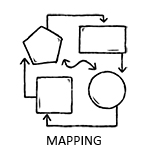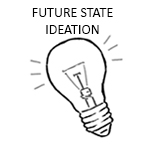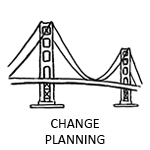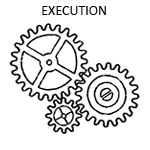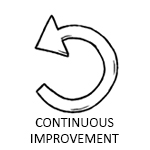Designing Efficient and Effective Workflow
It’s a wonderful feeling to see something improved, and over twenty years of experience in generating ideas and implementing them will contribute to success at the project management level or with a specific activity or skill in the project flow. Where are you in your process improvement journey? Click on a link below to find out.
Project Summaries
Reducing design errors, prototyping cycles and WIP leads to a faster time-to-market at a lower cost. This provides a strategic benefit for any company but is especially important for smaller entrepreneurial companies. At Teltrend, this effort required and received commitment from company leadership that allowed multiple departments to work together and come to agreement quickly.
Utilizing approaches found in six-sigma, lean and just-in-time principles, we designed and implemented a Design for Manufacturing (DFM) system. Cross-functional teams were brought together much earlier in the R&D phase to maximize the visibility of requirements and issues, and to make critical decisions earlier. Our analysis of manufacturing errors traced root causes back to design inputs. Those inputs were then corrected and the resulting design specifications were codified in ERP and CAD systems to automate decisions and software/machine behavior.
As a result, design errors were reduced by more than 90%. Less material was needed, less inventory was carried, and less labor was utilized. A culture of over-the-wall design shifted to greater collaboration and communication. And time-to-market was reduced by 25-33% by dropping three prototyping cycles to two.
Getting the most out of production resources achieves many things. It leads to flow and material efficiencies and reduces costs. It requires tighter interaction between personnel. Educating those personnel in collaborative principles and techniques and giving them the responsibility of making decisions are vital to achieving success.
At one high-tech manufacturing company, new product was being introduced into a manufacturing space that did not have much room for expansion. Analyzing queues and throughput rates of various functions highlighted areas where reallocating resources, creating new equipment, and redistributing activities resulted in minimizing work-in-process and freeing up floor space. Inventory costs were reduced, and no expansion needed.
To accomplish this, extensive change management was needed. Employees were educated on six sigma, lean and just-in-time principles so that decisions could be made at the point of impact in order to generate accountability and ownership in order to make the changes stick. Process documentation could then be removed from centralized control and put into the hands of team leaders who were empowered to make adjustment decisions and ongoing improvements. These foundational changes in behavior and applied knowledge provided the groundwork for other achievements.
JIT assembly on a manufacturing line can be complex. Human factors and quantitative analysis are both necessary in developing a repeatable system that results in consistency and quality.
In 1989, a group of assembly lines at Teltrend had too many pieces of instructions floating around. Paperwork was becoming lost or outdated without controls and the assembly personnel were from different language backgrounds. This was before the use of online technology had matured and so a paper documentation system had to be developed.
Our information analysis and design led from pieces of information existing on separate pages to effective single page instructions to simplify organization and revision control. An increased use of graphical elements and a reduction in the amount of text increased comprehension and reduced errors, not just with native English speakers but also those from other backgrounds.
Onboarding requirements vary widely across many organizations. On one end are simple checklists and confirmations while others require video and/or scoring to meet stringent requirements.
In 1999, student onboarding activities at a university required almost a full day of resource commitment in order to get them familiar with computing and networking resources, personnel and processes. Our analysis showed that much of the information did not have to be delivered in person and that online technology could be used to create a seamless sequence of learning activities that could then culminate in an in-person session. The major benefit would reduce unnecessary personnel involvement by over half.
Over the next 15 years in corporate organizations, we guided HR departments in designing processes and forms within talent management systems to eliminate the use of paper and reduce unnecessary personnel involvement by as much as 100%. Early on, we showed how links to document servers eliminated the need for providing paper documents to new hires. That now seems quaint today. With the wider use and maturity of LMS systems and video, we showed how to capitalize on those opportunities to provide a richer experience for employees and administrators.
Being able to accurately cost a product is critical. It provides the floor on which profit margins are built. It provides the baseline from which product and process improvements are justified. One organization was utilizing a method whereby a cost of a product was a multiplication factor of their BOM cost. There was no method of knowing whether or not the resulting figure was accurate or even consistent.
Utilizing time study results from Arthur Young, we created a costing calculator using an extensive multi-page spreadsheet. Each page represented a production and manufacturing cost center that calculated its portion of product cost based on consistent activities that were dependent on the characteristics and quantities of parts and assembly machines. The front page of the spreadsheet pulled together all the calculations to show a product’s total cost and its cost breakdown.
The creation of the calculator gave production and finance a quick, consistent and accurate tool that generated a consensus view of product cost and enabled the company to make better product pricing decisions. Existing products were put through the calculator resulting in some results that were noticeably different from the multiplication factor approach. And as products were changed or designed, the calculator could be updated with new time study results to give an estimate of the new cost.



